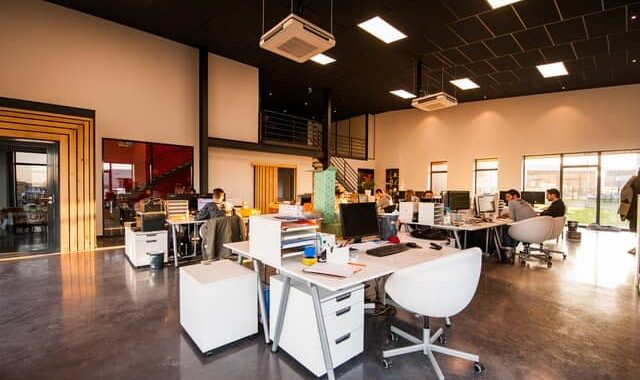
The employee experience has never been as important as it is now. Our economy and society have gone through many unprecedented changes throughout the last few years; it is now a job seekers’ market, and it is the businesses’ responsibility to learn how to navigate this economic transformation. The recent Millennial and Gen Z generations want to work at organizations that leave them feeling valued, engaged, and recognized. It is critical for companies to start addressing their employee experience.
But how is employee experience different than employee engagement? In this article we will take a look at the key differences and why companies today are shifting from employee engagement to employee experience to increase employee satisfaction and provide a safe place to increase employee moral.
Related articles:
Employee Experience: Everything You Need to Know
Learn How to Engage Employees in Each Stage of the Employee Life Cycle
What is Employee Engagement?
There are many different ways of defining employee engagement. What all these definitions have in common is that they emphasize an employees’ commitment to their company. Overall, engagement of an employee exhibits positive behaviors throughout their employee experience.
For example, engaged employees have strong emotional and mental connections toward their place of work. Employee engagement means employees are involved, committed to their jobs, and enthusiastic about the company’s goals and missions. Engaged employees are willing and able to contribute to an organization’s overall success. They are also psychologically devoted to their place of work and enjoy going to work each day. Having high levels of employee engagement means employees aren’t afraid to speak up and share their ideas on how their business can improve and flourish. They know their ideas will be taken seriously because the company knows they have their best interests at heart and enjoys how passionate about its success their employees are.
Actively engaged employees are productive, loyal and engaged to perform their action plan. On the other hand, the employee performance of a disengaged employee is average – whereas engaged employees work above and beyond their job description. Actively disengaged employees can be defined as basically retired, but still showing up to work. They show up at their jobs and do the bare minimum of their job description, just waiting until the day they’re free to retire so they can quit.
What is Employee Experience?
The employee experience encapsulates all of what employees observe and encounter over their entire course of their positive work environment. Every company should invest in their employees’ experience so that employees don’t suffer from low engagement. We all know companies invest in their customers’ experiences, but organizations and companies should equally invest in their employees as well so that they feel more engaged. A company’s employees are its greatest asset – not their products or consumers – and when employees are taken care of and appreciated, it directly correlates to a greater customer satisfaction.
What is the Difference?
The main difference between employee experience and employee engagement is that employee experience focuses on an employee’s entire encounter throughout their tenure at a certain organization. Employee engagement focuses on each employees’ individual commitment, relationship, and how much they are putting into the company and the work they’re contributing towards it.
For example, a company that has low employee engagement i.e., disengaged employees; feel no deep connection to their job or have any key engagement to their work. They tend to try to get away with just performing at the bare minimum to not get terminated. Employee disengagement can show up in a variety of ways. Disengaged employees only think about their jobs when they are working. For example, employees that work a traditional 9-5 will only show up and work within those hours. They’re unwilling to participate in any social events outside of typical working hours, won’t make an effort to create relationships with their co-workers, which will ultimately prevent them to become happier and emotionally feel unmotivated.
A workplace with negative employee experiences will likely have bad reviews online on popular job sites such as Glassdoor’s employee survey. Employees with negative experiences within an organization will likely leave that job as soon as they get a chance making a big dent in the turnover rate for your top talent. This leads to companies having a very low employee retention rate as well. New research is showing that around 10% of Millennials starting new positions will leave their organization within their first six months due to a negative experience.
Employee Engagement is Formed with Relationships
Employee engagement is formed with relationships in an engaging workplace. Engaged employees are outgoing and enthusiastic about going to work because they’re excited to work alongside their coworkers. They have established strong relationships and friendships which makes their jobs more fun. Employees get to chat and spend time with their peers on the side of getting their work done for the day. This changes their mindset for their daily tasks which increase engagement.
Some examples of engaging behaviors are being optimistic, team-oriented, self-less, solution-oriented, and passionate. Engaged employees cheer their co-workers on and are happy for each other when they succeed. Employee engagement is directly related to employee relationships with each other. The more employees are engrossed in their job, it deepens their relationships within co-workers as well.
Also, employees that are highly engaged in their work have less time to engage with their coworkers. An engaged workforce tends to avoid conflict with their colleagues; once they do get a chance to chat, they catch up and can have fun, light-hearted conversations. While companies with a highly disengaged workforce have more rumors, gossip, and drama stirred around coworkers. When employees are disengaged, they have more time to kill, and since they rather do anything else than their actual job description, they’re much more likely to interfere with their colleagues’ tasks, get involved in company politics, or critique others. Their dissatisfaction will interfere with the engagement and satisfaction of the rest of the staff making it a toxic environment.
How Does Employee Engagement Influence the Employee Experience?
Having high employee engagement has the power to greatly improve an organization’s employee experience and having a higher level of engagement can significantly affect a workplaces’ retention rate. Having a high rate of retention saves organizations thousands of dollars. There is a lot of money put into finding and recruiting new hires, training, and onboarding them, and not to mention all the time and energy put into these trainees.
Having engaged employees means they will be loyal to their company because they’re enjoying their experience. They’ll also be likely to share how happy they are and share their experiences with others both within and outside of the workplace, which will likely attract the ideal candidates the employer wants to hire. This sets the precedent that this organization values its employees, and most people they hire stay for a long, long time because they’re loving their experience. As you can see, the employee experience goes beyond engagement. It’s every transaction they have at work daily which are impacted by things like engagement, morale and culture.
At the same time, the opposite is also true. When employee experience is made smooth and pleasant, employees are more likely to engage in the workplace and contribute to the workplace culture.
Going Beyond Employee Engagement
Going beyond employee engagement means actively working on improving their experience. If you’re unsure if employees are engaged, give everyone anonymous employee engagement surveys and with these survey questions you will have a better understanding of what they need. Employees will be honest and responsive to it because it directly could benefit them! Here are some ideas you can use to improve:
- Practice open and honest communication: Employees love sensing that they have a voice in their company, be transparent about numbers, how the company’s performing- if it’s doing good or bad! You can also make an employee engagement survey to know at which level you are in and make a plan of where you want to be by the end of this transition. The bottomline would be to get employee feedback. Try to work around this and provide the best space for this communication to feel welcomed in the company.
- Equal and transparent pay: Pay employees what they deserve and earn; make sure there are no disparities within race, gender, ethnicity, or sex. As there has been many studies, survey results have came out that many employees feel some type of discrimination in their work place. Business leaders must have a focus on how this can be amended and how to change practices that may trigger this.
- Reward and recognize your employees: Establish a company culture of recognizing your employees for their success. Create a reward program tied to an organization’s goals, and everybody wins! This will in exchange create personal growth to all employees.
- Allow flexible working hours: With the rise of remote work, lots of people want to work from home, let them! Also, give them the choice of going to the office for those who want it. Employees want work-life balance, this is a great way to achieve it. Also, being flexible with a healthy approach to absenteeism should also put into place. Have an open conversation of what matters most in their tasks which have to be done and things that are not urgent but have to be done. Set the rules from the first day of the available days that can be absent but, keep an open mind if additional days should be granted.
- Introduce friendly competitions: Just like being recognized, everyone enjoys a little friendly competition. You can start competitions within teams or departments, and reward the winners with a bonus, gift cards, party, or anything else you think the team would enjoy. This would boost team morale and keep your employees engaged and motivated in their jobs while also creating a fun company culture through these employee engagement activities. By placing the worker satisfaction as a priority, it will bring higher motivation as the engagement of employment usually comes from the sign of appreciation from upper management and feeling welcome in the company.
- Adopt employee experience technology: Making sure that the foundational technology that supports your business functions are easy to access, easy to use and are built to meet the needs of all employees no matter their roles or location. Flexibility and user experience should be at the core of your digital strategy. This can be by utilizing a platform that influences positive employee experience such as an employee engagement software that consolidates all your data and software on a single platform. This will provide an addition to positively create overall engagement with more flexibility and reach by having accountability over the employee satisfaction. Employees will be more organized which will ultimately motivate them in their job.



-640x380.jpg)
